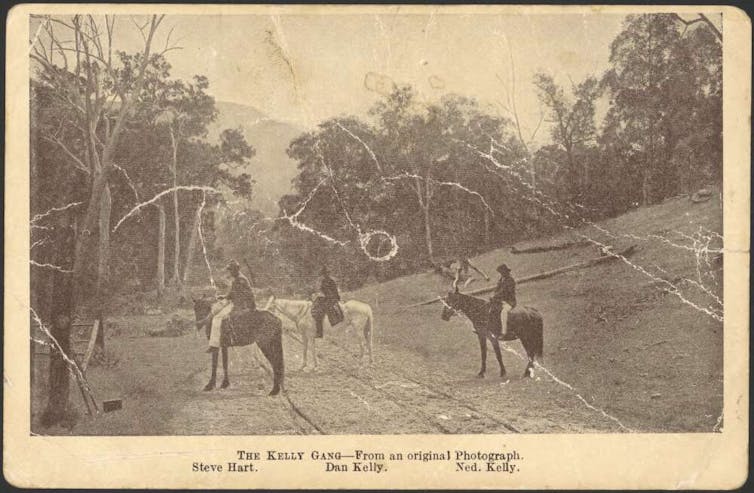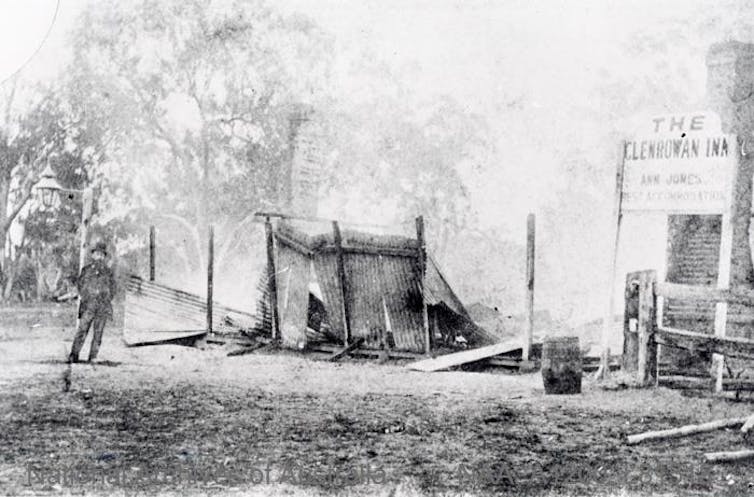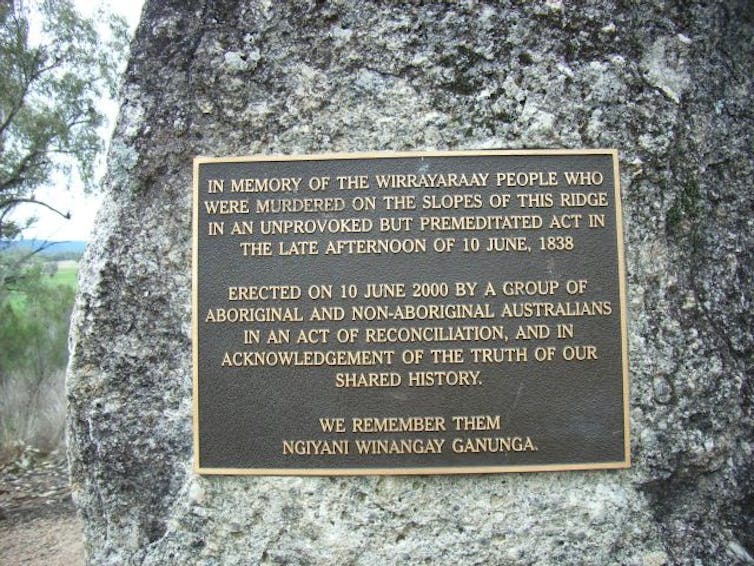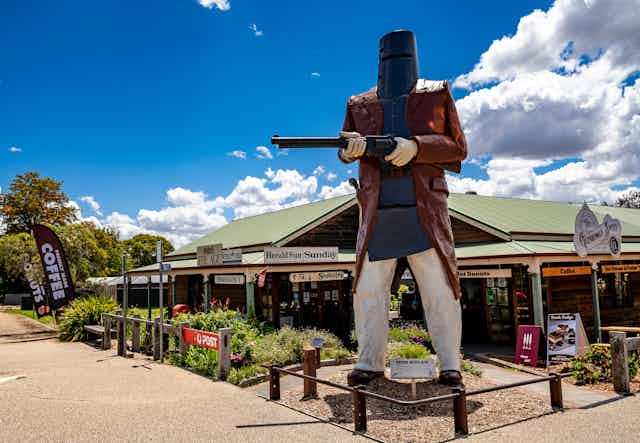The Victorian Supreme Court has determined the descendants of Ned Kelly’s family are not a distinctive cultural group with the right to protections of their “intangible cultural heritage”.
The Kelly clan’s bid for recognition was provoked by a proposed tourist development at Glenrowan, the site of the outlaw’s last stand in 1880. The new centre will look at the story of the Kelly gang in the context of Glenrowan’s broader history.
Kelly’s grand-niece, Joanne Griffiths, argues the new structure and landscaping will “disrespect” her family’s “human rights” as cultural “custodians”.
Justice Melinda Richards found Griffiths and the family could not prove practices that would distinguish them as a cultural group. The redevelopment continues as proposed.
Griffiths has claimed the court’s decision is a continuation of the “persecution” meted out to the Kelly family:
If we were Indigenous this wouldn’t be happening.
The case raises fascinating questions about the definition and evidence of White cultural heritage in Australia – and the way we treat sites of colonial history.
Read more: Friday essay: how a 'gonzo' press gang forged the Ned Kelly legend
What is White cultural history?
Glenrowan is tucked inside the south-eastern boundary of Yorta Yorta Country, where the Ovens River floodplains meet the rising foothills of the Victorian Alps.
In 1998, the Yorta Yorta were denied native title because, according to Justice Howard Olney, “the tide of history has undoubtedly washed away any traditional rights” to their lands and waters.
The Kelly descendants made no claim to native title. But by invoking their cultural heritage they tasked themselves with the same burden of proof required of First Nations people in fighting for land rights.
The Kelly descendants were not claiming the site as one of public significance. They were instead claiming a familial connection.

There is no doubt Ned Kelly’s descendants share a unique emotional relationship with Glenrowan. That needs no justification or proof.
Many non-Indigenous people like myself feel close to certain places in Australia.
Historian James E Young coined the term “collected memory” rather than “collective memory”.
“A society’s memory,” he says, “might be regarded as an aggregate collection of its members’ many, often competing memories.”
Several Australian authors have explored this collected memory. Luke Stegemann’s Amnesia Road investigates the entanglement of Stegemann’s life and work in the colonial histories of Queensland and Andalusia. Dean Ashenden’s Telling Tennant’s Story examines how the place of his upbringing embodies the impacts of settler colonial legislation.
Collected memory is also enacted in memorials – the statue of politician William Crowther in nipaluna/Hobart is being removed so only the plinth will remain, with signage explaining his contentious history – and in public rituals like Survival Day Dawn Services.
As well as lacking recognition of the Yorta Yorta struggle, the Kelly family’s bid overlooks the ongoing critique by historians like David Dufty of Ned Kelly’s story as a tale of “persecution”.
Anti-Irish racism notwithstanding, Dufty highlights Kelly’s ruthless violence, use of terror in taking hostages and incoherent politics.
Read more: True History of the Kelly Gang review: an unheroic portrait of a violent, unhinged, colonial punk

By asking what is distinctive about the Kelly descendants’ right to cultural protections, we are echoing a question posed by Gunditjmara artist Paola Balla:
Tell me what it means to be a white person […] beyond a notion of racial superiority.
White cultural heritage in Australia is made of many memories and histories that intersect with one another, with settlers of colour and with First Nations people.
How we commemorate colonial history
Cases like these raise interesting questions about how we identify – and memorialise – shared heritage.
If the Kelly family took a more nuanced position, they could have opened a public conversation about how we commemorate colonial history, the nuances of historical Irish-Blak solidarities, and a deeper sense of White allyship to First Nations people’s human rights.
With its Big Ned, bark hut museum and janky animatronic diorama, Glenrowan is currently a prime example of what writer and artist Melody Paloma defines as “settler kitsch”.
In Australia, the development of monuments to colonial history continues to be a work in progress.
The proposed development is a chance for a more complex presentation of colonial heritage. The Sovereign Hill living museum is working to illuminate the culturally diverse stories of Ballarat. The Tasmanian Museum and Art Gallery has also sought to face its past by recentering its public program and exhibition spaces around First Nations and particularly Palawa art and culture.
Photographer Jon Rhodes has spent decades documenting the curious histories of municipal and community treatment of sites of First Nations’ cultural heritage, and colonial violence.
An outlier, the Myall Creek Massacre Memorial offers a deeply affective model of how such sites of shared cultural heritage can be rebuilt and maintained by White and Blak communities together.

Perhaps Glenrowan will come to be understood as one such place: always Yorta Yorta; for a moment a place of complicated anti-colonial, White-on-White rebellion; later, a carnival of settler kitsch; and eventually, maybe, a thoughtful site of ongoing history-telling, embedded in Country.
Developments like the one coming to Glenrowan could create tangible answers to the question of what an inclusive and informed experience of White cultural heritage might look like.

